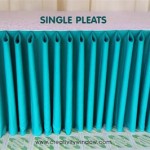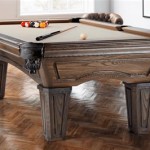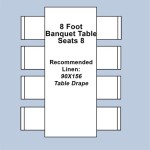The Versatility of Round Dining Table Expandable Designs
The round dining table expandable design represents a confluence of space optimization and functional adaptability. These tables offer a compelling solution for homeowners who value both intimate, casual dining experiences and the ability to accommodate larger gatherings. The inherent circular shape fosters conversation and encourages a sense of inclusivity, while the expandable feature provides the flexibility to transform the table into an oval or other elongated shape, comfortably seating additional guests when needed. This dual functionality makes them a popular choice for modern living spaces where versatility is paramount.
Understanding the intricacies of round dining table expandable designs requires examining various materials, expansion mechanisms, styles, and spatial considerations. Each aspect contributes to the overall aesthetic and practicality of the table, influencing its suitability for different homes and lifestyles. From solid wood construction to sleek, contemporary designs incorporating metal and glass, the diversity available ensures that homeowners can find a table that seamlessly integrates with their existing decor.
Space Efficiency and Social Dynamics
One of the most significant advantages of a round dining table, even before considering the expandable feature, is its space efficiency. In smaller dining areas or apartments, a round table occupies less visual space than a rectangular one. This is because the eye perceives the unbroken lines of the circle as less imposing, creating a sense of openness. People can move around it more easily without bumping into sharp corners, contributing to a more fluid and comfortable dining experience.
Furthermore, the circular design inherently promotes social interaction. Everyone seated at a round table is equidistant from the center, fostering a sense of equality and encouraging conversation across the table. This is in stark contrast to rectangular tables, where those seated at the ends may feel more dominant or isolated. The expandable feature maintains this inclusive atmosphere even when the table is extended, as the oval or elongated shape retains a relatively centralized focal point, encouraging communication among all diners.
The expandable nature of these tables becomes particularly valuable during holidays, family gatherings, or dinner parties. Instead of requiring a separate, larger table that occupies valuable storage space when not in use, the expandable round table can seamlessly transform to accommodate the additional guests. This adaptability eliminates the need for cumbersome storage solutions and allows homeowners to maximize the use of their dining space year-round.
Expansion Mechanisms and Structural Integrity
The expansion mechanism is a crucial aspect of any round dining table expandable design. The mechanism must be robust, reliable, and easy to operate. Several common types of expansion mechanisms are available, each with its own advantages and disadvantages. The most common include:
- Butterfly Leaf: This type of leaf is hinged and folds away neatly beneath the tabletop when not in use. To expand the table, the two halves of the tabletop are pulled apart, and the butterfly leaf is unfolded and secured in place. This mechanism is relatively simple and convenient, but the leaf may be limited in size, and the hinge mechanism needs to be of high quality to ensure smooth operation and prevent sagging over time.
- Drop-In Leaf: This mechanism involves one or more separate leaves that are stored separately and inserted into the center of the table when expanded. This allows for greater flexibility in terms of the size of the extension, but it requires dedicated storage space for the leaves. The insertion points must also be precisely aligned to ensure a seamless and level surface.
- Self-Storing Leaf with Hidden Slide Mechanism: This sophisticated design integrates the leaves into the table's frame, often using a hidden slide mechanism. When expansion is desired, the tabletop is pulled apart to reveal the self-storing leaves, which can then be easily raised and locked into position. This eliminates the need for separate leaf storage and offers a streamlined aesthetic, but it can be more complex and potentially more expensive to manufacture.
Regardless of the expansion mechanism chosen, the structural integrity of the table is paramount. The frame and legs must be sturdy enough to support the weight of the extended tabletop and the added load of diners and dishes. Solid wood construction, reinforced joints, and high-quality hardware are essential for ensuring long-term durability and stability. The mechanism itself should also be rigorously tested to ensure smooth and reliable operation over repeated use.
Materials play a crucial role in the table's structural integrity and aesthetic appeal. Solid hardwoods like oak, maple, and walnut offer exceptional strength and durability, while also providing a rich, natural beauty. Veneered wood can offer a more affordable alternative while still maintaining a similar aesthetic. Metal frames, particularly those made of steel or wrought iron, can provide additional support and a modern industrial aesthetic. Glass tabletops, often paired with metal frames, offer a sleek and contemporary look but may require more careful handling to prevent scratches or damage.
Style Considerations and Material Choices
The aesthetic style of a round dining table expandable design should complement the overall decor of the dining area and the homeowner's personal preferences. A wide range of styles are available, from traditional to contemporary, rustic to minimalist. Careful consideration should be given to the table's shape, finish, and detailing to ensure a cohesive and harmonious look.
Traditional designs often feature ornate carvings, turned legs, and rich wood finishes. These tables may be crafted from solid hardwoods like cherry or mahogany and often incorporate details like inlaid wood patterns or decorative moldings. The expansion leaves are typically designed to seamlessly blend with the existing tabletop, maintaining the traditional aesthetic even when the table is extended.
Contemporary designs tend to be more streamlined and minimalist, with clean lines, geometric shapes, and a focus on functionality. These tables may incorporate materials like glass, metal, and engineered wood, often featuring sleek metal legs and smooth, unadorned surfaces. The expansion mechanisms are typically concealed or integrated seamlessly into the design, maintaining the table's minimalist aesthetic even when extended.
Rustic designs evoke a sense of warmth and natural beauty, often featuring reclaimed wood, distressed finishes, and exposed joinery. These tables may have a more substantial and robust construction, with thick wooden legs and a rugged, textured tabletop. The expansion leaves may be made from the same reclaimed wood, maintaining the rustic aesthetic even when the table is extended.
Material choices impact both the aesthetic appeal and the durability of the table. Solid wood offers a timeless elegance and exceptional durability, but it can be more expensive than other materials. Veneered wood provides a more affordable alternative while still maintaining a similar aesthetic, but it may be less durable than solid wood. Metal frames offer strength and stability, while glass tabletops provide a modern and sophisticated look. The choice of materials should be carefully considered based on the homeowner's budget, aesthetic preferences, and lifestyle.
The finish applied to the table also plays a significant role in its overall appearance and durability. A wide range of finishes are available, from natural oils and waxes to lacquers and paints. Natural finishes like oil and wax enhance the natural beauty of the wood and provide a soft, matte sheen. Lacquers and paints offer a more durable and protective finish, but they may conceal the natural grain of the wood. The choice of finish should be based on the desired aesthetic and the level of protection required.
In conclusion, the round dining table expandable design presents a compelling blend of form and function, offering a versatile solution for modern dining spaces. Factors such as space efficiency, social dynamics, expansion mechanisms, structural integrity, style considerations, and material choices contribute to the overall appeal and suitability of these tables. By carefully considering these aspects, homeowners can select a table that seamlessly integrates with their existing decor and provides years of enjoyable dining experiences.

Mid Century Rounded Expandable Dining Table 42 80 West Elm

Modern Expandable Round Dining Table

Portside Outdoor Round Expandable Dining Table 48 93 West Elm

Extendable Non Round Dining Table Oak Scandinavian Handmade Handcrafted Steel Extending Black FjÄril

Round Extendable Dining Table For 6 Modern Wood Kitchen With 16 Leaf Farmhouse Room Seats Up To People Weight Capacity 300 Pounds Espresso Com

Astrid Mid Century Round Extendable Dining Table Brown Threshold Target

Emmerson Round Expandable Dining Table 60 72 West Elm

Expandable Round Heirloom Pedestal Table Custom Hardwood James

Astrid Mid Century Round Extendable Dining Table Black Threshold Target

Harper Bright Designs Retro 5 Piece Antique White Wood Top Extendable Round Dining Table Set With 4 Upholstered Chairs Xw073aak The Home Depot
Related Posts








